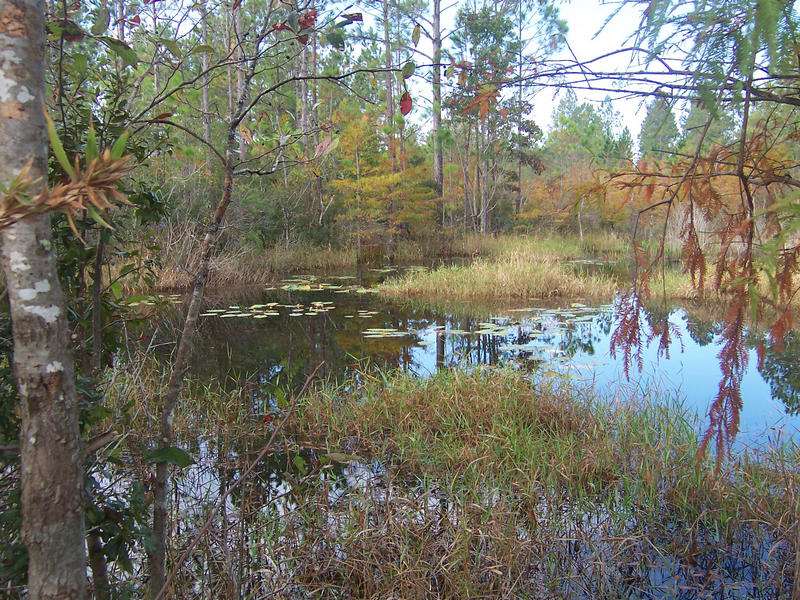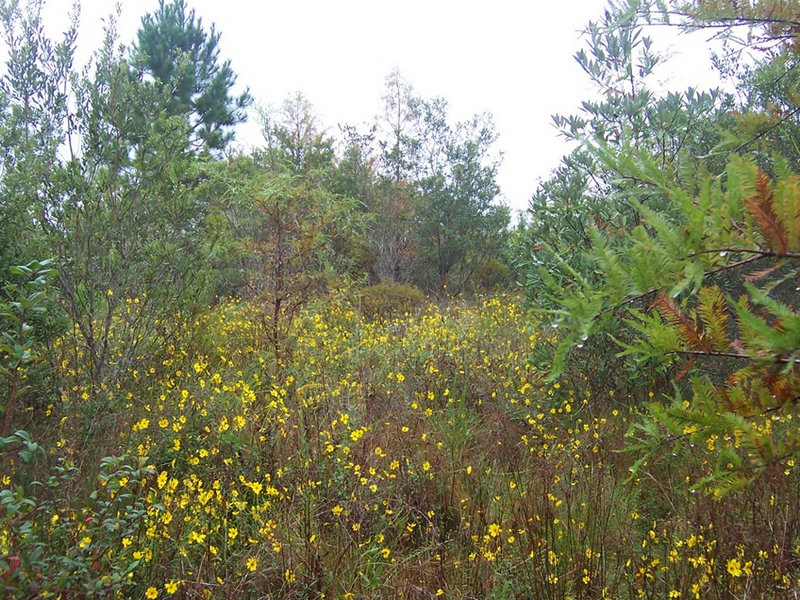There are Three active and two inactive heavy minerals mines in Florida. The heavy minerals mines are between approximately 5,000 and 10,000 acres in size.
The Mining and Mitigation Program administers reclamation, environmental resource/stormwater management, and federally-delegated dredge and fill (404) permit programs for mining operations in Florida, including heavy minerals. Reclamation standards for heavy minerals mining are detailed in Part II of Chapter 211, Part III of Chapter 378, Florida Statutes (F.S.), and Chapter 62C-37, Florida Administrative Code (F.A.C.).
An Environmental Resource Permit (ERP) is also required for heavy minerals mining projects. Environmental resource permitting standards are detailed in Part IV of Chapter 373, F.S., and Chapter 62-330, F.A.C. Permits or authorizations from other local, state or federal agencies may also be required prior to mining.
What are heavy minerals?
In Florida, heavy minerals are defined by Section 378.403(7), F.S. These are minerals found in sand deposits that have a specific gravity not less than 2.8. This includes zircon, staurolite and the titanium minerals (ilmenite, leucoxene and rutile). Ilmenite and rutile are primary source materials used to manufacture titanium dioxide pigments. These pigments are often used in the manufacture of paint, varnish and lacquers, plastics and paper. Zircon is marketed to the ceramics industry. Staurolite is used as an abrasive.
Where are the heavy mineral mines in Florida?
Heavy mineral mining began in Florida in 1916 at Mineral City (now Ponte Vedra Beach). At one time, heavy minerals were mined from several locations along the east coast of Florida from Boulogne to Vero Beach. Currently, the industry operates in Baker, Bradford, Clay and Duval counties. The mine boundaries can be seen through Map Direct.
How are heavy minerals mined in Florida?
Prior to mining, the trees may be harvested and the land is cleared. The topsoil is stockpiled for use during reclamation. The overburden (earthen material that will not be sold) is removed and stockpiled along the edge of the mining area. The overburden may be used to contain sediment and stormwater within the mine. After mining is complete, the topsoil and overburden may be used in reclamation for slopes and revegetation.
Heavy minerals occur as sand grains mixed with lighter clays and quartz sand grains. Within the ore body, less than 5% of the grains may be heavy minerals. Two mining methods are used: suction dredging and auxiliary mining.
Suction Dredging: An electrically powered suction dredge floats within a 15- to 20-acre man-made pond. The dredge draws in overburden, ore and water from one end of the pond and transfers the mixture to a floating wet mill. Vibrating screens remove roots and other large objects. Spiral centrifuges concentrate and separate the heavy mineral sands from the lighter clays and quartz sand. The 80% heavy mineral concentrate is pumped to a stockpile area before being transported to a plant for further processing. The tailings of clays and quartz sand is discharged back into the pond behind the suction dredge.
As the dredge moves forward, the area behind the dredge is recontoured, covered with topsoil, and revegetated to meet reclamation standards.
Auxiliary Mining: This method is used in locations that are not suitable for suction dredging. The topsoil and overburden is removed with earth moving equipment and stockpiled for later use in reclamation. The ore layer is loaded on to trucks and hauled to an area in front of the suction dredge or to a mobile mining unit.
At the suction dredge, the ore is processed as described above. At the mobile mining unit, over-sized material including roots, rocks and hardpan are removed. The remaining material is mixed with water and pumped to a modular concentrator for separation. Tailings from the suction dredge or the modular concentrator are pumped back into the auxiliary area to backfill the mined-out pits. The auxiliary areas are then backfilled with overburden, recontoured, covered with topsoil, and revegetated to meet reclamation standards.
What are the reclamation standards for heavy mineral mines?
The Florida Legislature requires reclamation of lands mined for heavy minerals after July 1, 1975. Mine operators are required to provide the department with a conceptual reclamation plan. Part of our extensive evaluation of reclamation plan design includes analysis of water quantity impacts, consideration of best available technology, and focusing on preservation of wildlife habitat and resources.
Reclamation means the reasonable rehabilitation of land where resource extraction has occurred (Chapter 378.403, F.S.). Areas subject to the reclamation requirements must be reclaimed after mining is complete. Debris, litter, junk, worn-out or unusable equipment or materials must be disposed of. The land must be contoured and stabilized to control erosion. Bare areas must be revegetated.
Wetlands must be reclaimed to pre-mining acreages and watershed boundaries must be restored. Reclamation standards for heavy mineral mines are detailed in Part III of Chapter 378, F.S., and Chapter 62C-37, F.A.C.
What permits are required for heavy mineral mines?
There is no comprehensive permit that covers all aspects of large projects, including mines. An applicant may have to consider the requirements of several regulatory agencies. Each agency may regulate only the specific activities based on authority granted by Congress, the Legislature or county commission.
To start construction, the applicant must have all necessary federal, state and local approvals.
The Mining and Mitigation Program reviews applications for Environmental Resource Permits (ERP). Activities that typically require an ERP include dredging and filling located in, on or over wetlands or other surface waters, as well as the construction of structures. The permit governs the construction, alteration, operation, maintenance, repair, abandonment and removal of stormwater management systems, including dams, impoundments, reservoirs, appurtenant works and works. The rules used to implement the ERP are authorized under Chapter 373, F.S. ERPs are also subject to Chapter 403, F.S., which governs activities that may pollute ground or surface waters, including wetlands.
Chapter 62-330, F.A.C. and the Applicant’s Handbook, Volume I, and Applicant's Handbook, Volume II, provide explanations, procedures, guidance, standards and criteria for ERPs. The forms used for the ERP program and filing instructions may be obtained online.
How does the department monitor activities at heavy mineral mines?
Each operator provides the department with an Annual Mining and Reclamation Report describing activities for the previous calendar year, and proposed mining and reclamation activities for the current year. The ERP permit may require additional monitoring reports.
Routine compliance inspections are conducted to ensure that mining and reclamation activities follow permit and reclamation rules.
How can you obtain public records?
You can obtain a list of applications for permits and conceptual reclamation plans that are currently under review with the department. This will provide the application number which can be used when requesting public records.
The Florida Department of Environmental Protection maintains public records in an electronic document management system. You can obtain public records relating to applications, plans, reports and inspections through either of these websites:
You may also request public records by contacting the Mining and Mitigation Program at MiningAndMitigation@FloridaDEP.gov or 850-245-8336.
For More Information
Florida Department of Environmental Protection
Mining and Mitigation Program
2600 Blair Stone Road, Mail Station 3577
Tallahassee, Florida 32399
850-245-8336 (phone) / 850-245-8356 (fax)
MiningAndMitigation@FloridaDEP.gov
References





